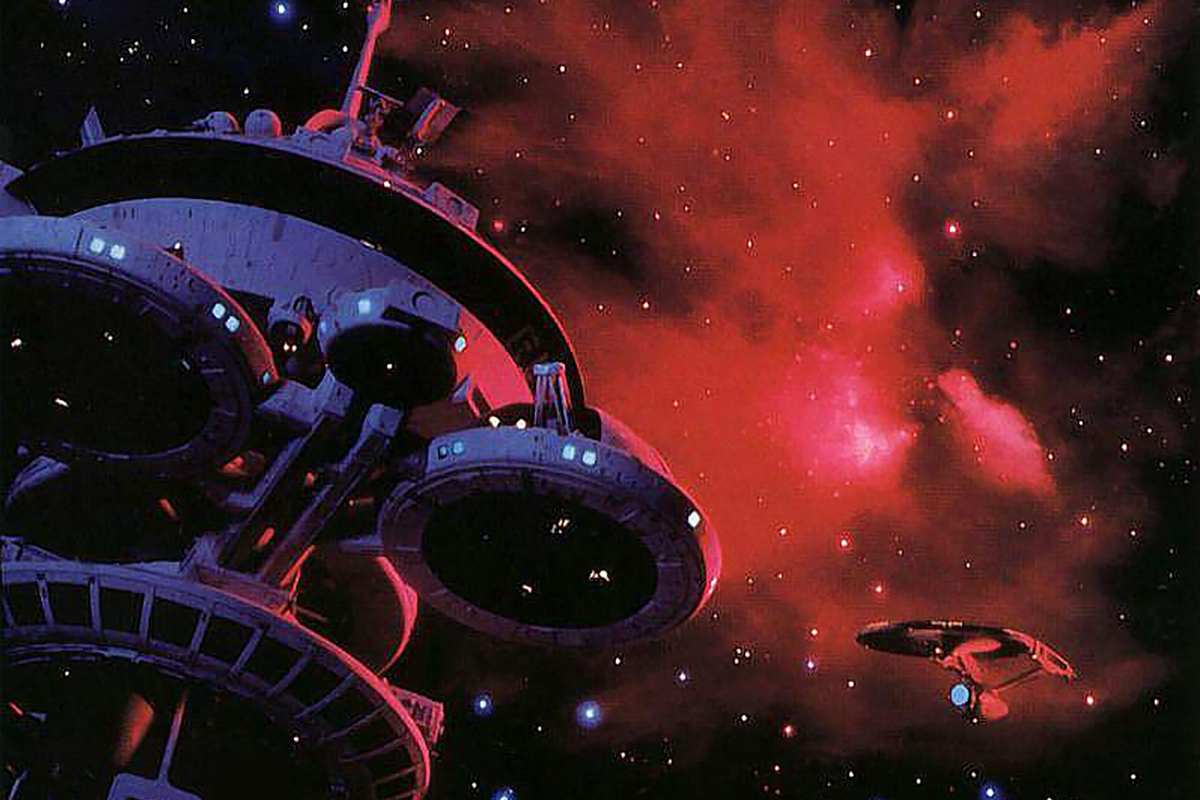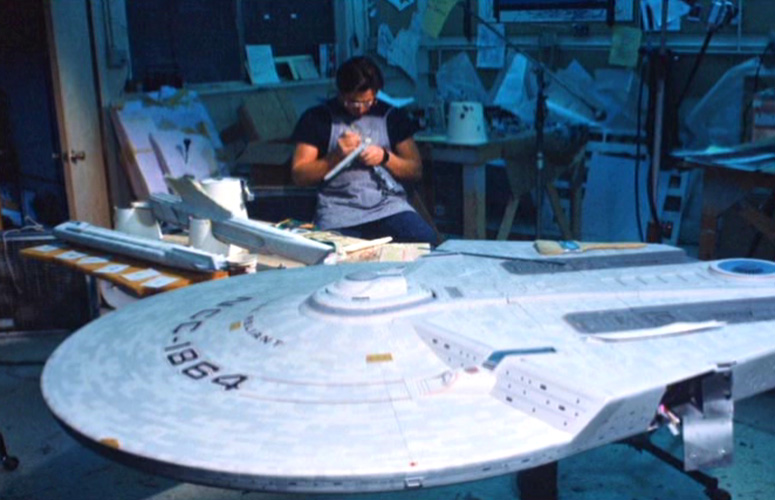Creating The Wrath of Khan’s Visual Effects
The visual effects of The Wrath of Khan were filmed quickly, efficiently — and, most importantly, they came in on budget.
Contrary to the first Star Trek film, the effects were produced by Industrial Light and Magic (ILM), a company that would eventually dominate the industry.
Producer Robert Sallin told Star Trek: The Magazine that ILM was “incredible”.
The most professional, the most delightful, the most responsive. I couldn’t say enough good things about the whole crew. It was an amazing experience.

As a sequel, Star Trek II was able to reuse many of the models that had been created for The Motion Picture. Besides the Enterprise, Sallin wanted to make use of the orbital office complex Kirk had beamed up to in the first film; it became the Regula I space station.
Steve Gawley, head of the model shop, recalled:
We took it apart and put it upside down and then reattached some of the outer pods in a different way.
They also added an animated sequence of lights to the hangar bay.
Building Reliant
The remaining shots required new models. The ILM team built the Regula planetoid and several other simple pieces, but the main task was the construction of the Reliant — the first Starfleet vessel other than the Constitution class ever seen.
Paramount’s Art Department provided the model builders with detailed drawings to work from and, as model maker Bill George remembered, a general instruction that the two ships should look as different from each other as possible.
According to Production Designer Joseph Jennings, “In the dogfight you had to instantly recognize which ship you were looking at.”
George wasn’t keen on a proposal to give the Reliant a different color scheme from the Enterprise:
When I got [the drawings] in I said, “This can’t happen.” So I showed them to Kenneth Ralston [ILM supervisor]. His take on it was, “Let’s put on the Federation graphics we’ve seen before and see what they say.” Thankfully, the producers were happy with it.


ILM built two models: a small one and a large one. Robert Diepenbrock, who worked for the company at the time, told Forgotten Trek in February 2020 that the large Reliant was built in the same scale as the Enterprise. The small Reliant matched the larger version “in every detail and was used in forced-perspective and wide-effects shots.”
Battle damage
The biggest challenge was the battle between the Enterprise and Reliant. The script demanded that the two ships inflict heavy damage on each other. ILM used several different approaches to make sure they didn’t have to damage the actual models.
On the Enterprise, the damage was essentially cosmetic: pieces of aluminum were added and tainted so that the “damage” could literally be peeled off.





The damage to the Reliant was more serious, so larger versions of parts of the ship were built that could be destroyed.
The initial confrontation ended with the destruction of a dome toward the rear of Reliant saucer. After that came the biggest single effects sequence of the film: the Battle of the Mutara Nebula.
To create the nebula, the team used a cloud tank, which is basically a large container with colored liquid in it. ILM spent weeks shooting the tank, searching for shots that could be used as background to the epic battle scene.
Once the nebula had been filmed, the team focused on the ships that would be moving around inside it. Because they were often in the distance, ILM could use small versions of the models, which were easier to handle than the full-size models and could perform bigger maneuvers.


In one of the most impressive scenes, the Reliant fires its phasers at the Enterprise’s “neck”, cutting an enormous gash in the process. This shot was created using traditional stop animation techniques.
“I had that section done as a wax piece and then painted it to look like the ship,” said Ralston.
Obviously, we worked out exactly how the camera was going to move. Then I just went into the wax version and I would take little sculpting tools and rip stuff up and bend it around. We’d film that, then the camera would move whatever distance it would cover in one frame and I’d sculpt some more damage. Then, on top of that, we did some animation of a laser hit sort of cutting into it, but if left a real cut — a big scar.
The damage brought onto the Reliant was even more severe and involved making several separate sections.
“One of the engine pods blows up,” remembered Ralston.
We couldn’t blow up the whole pod for some reason, so I built a shape similar to it and it was more like glass blowing out of the warp nacelle. We shot that as a separate element and then printed that on top of the actual model for the Reliant, with other pieces blowing off of it. Then, when the whole nacelle blows off, that was just a bunch of explosions and a separate arm that we shot using motion control.
